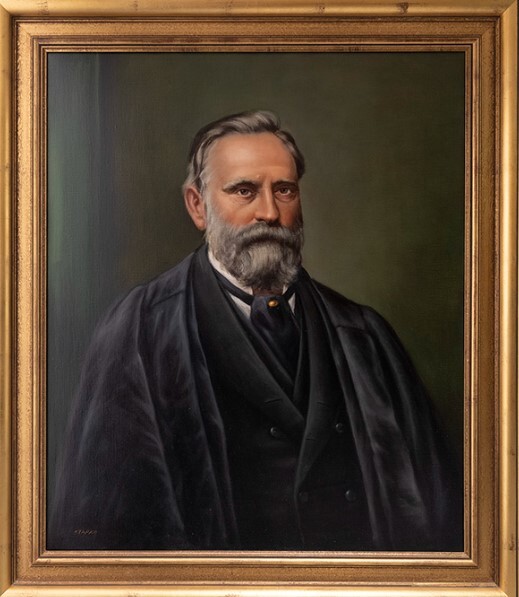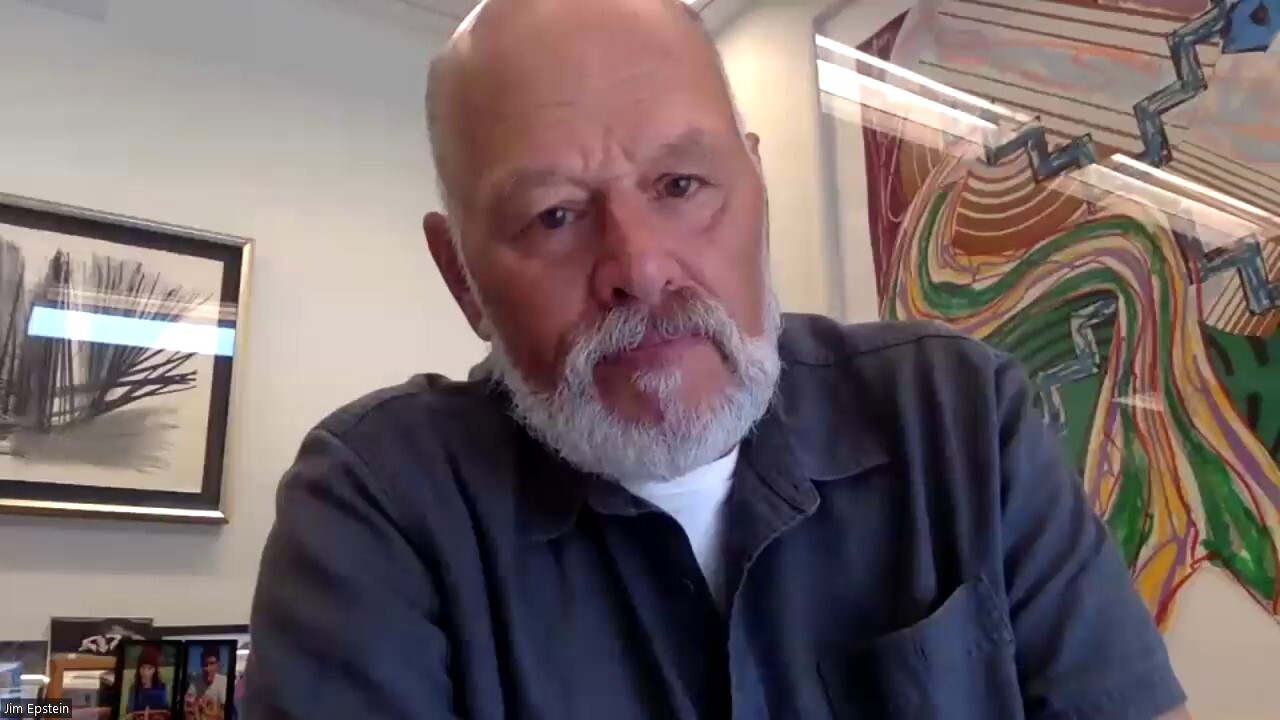GLENDALE, Ohio — A hilltop farm in Glendale was a stop on the Underground Railroad. Decades later, it was purchased by a granddaughter of William Procter, founder of Procter & Gamble Co.
Coincidence? Bill Parrish thinks not.
“In 1948, we had 25 millionaires in the village,” said Parrish, president of the Eckstein Cultural Arts Center in Glendale. “And we’re finding that wealth was used to support the Underground Railroad. We’re finding that proof that really supports that now.”

Parrish, who grew up in Glendale, remembers learning about tunnels that were used to hide fugitive slaves. Last October, he showed the remnants of those tunnels to P&G descendants.
“Huge fancy houses with tunnels that connect them,” said Jim Epstein, a fifth-generation descendant of James Gamble.
“Procter and Gamble both were, I don’t know, they weren’t the architect. They were the founders of a lot of that,” said Chris Matthews, whose great-grandfather married into the Procter family in the late 1800s.
Epstein and Matthews are intrigued by the idea that P&G’s founders may have been involved in the Underground Railroad movement because they want the company to be more of a crusader on one of today’s big issues: Deforestation. So, the WCPO 9 I-Team has been looking for evidence: Did P&G’s founders really play a role in the local anti-slavery movement?
“We, unfortunately, do not have any information/records on the question,” said Shane Meeker, P&G’s company historian.
P&G descendant — and former Glendale resident — Pat Carruthers described “a tunnel leading from the laundry room in the basement” of the Procter family compound, known as the Oaks, in a YouTube video that Parrish helped to produce in 2021.
“Dad told us it was for the Underground Railroad,” Carruthers said in the video.
The Glendale Heritage Preservation Museum cast doubt on the story.
“The founder of P&G, William Procter, didn’t live in Glendale,” said Martin Sinnott, the museum’s president. “His son, William A. Procter, moved to Glendale to raise a family in 1861. Glendale Heritage Preservation has no evidence of tunnels from the Procter compound. The existence of tunnels is purely speculative.”
The Cincinnati Times-Star newspaper reported in 1949 that “men came after dark and stoned his house” when P&G founder William Procter “advocated a bond issue to free and pay for the slaves.” The story doesn’t say when the stoning incident happened. It was related without attribution as part a broader story about Procter’s downtown home, which was demolished that year.
“For decades, to have a business linked with any slave sympathies was to risk losing your business,” said Betty Ann Smiddy, author of Cincinnati’s Golden Age, a book about industry and culture at the turn of the 19th century.
Smiddy said many local business leaders contributed quietly to the anti-slavery movement and connected with like-minded souls at organizations like the Cincinnati Horticultural Society, where William Procter was a member.
“Among the members were many with an anti-slavery leaning. Some were outright, outspoken abolitionists,” Smiddy said. “While Procter did not attend anti-slavery rallies, whose attendee names were published in the newspaper, the horticultural society could have served as a place to speak with those of similar minded political views.”
But perhaps the strongest evidence of a Procter family link to the anti-slavery movement comes from Stanley Matthews, a former U.S. Supreme Court justice whose two sons married William Procter’s granddaughters in 1881 and 1897.

Matthews graduated from Kenyon College in 1840, then started his career by studying law in the office of Salmon P. Chase.
One of Chase’s biggest cases involved a Glendale farmer named John Van Zandt, who was sued in 1842 for transporting fugitive slaves and “died a financially ruined man in 1847,” according to a 2015 Freedom Center Journal article by Carter Westmoreland.

Glendale residents know Van Zandt’s former home as the Eliza House, named after a runaway slave in the novel, "Uncle Tom’s Cabin."
“The character of John Von Trompe, who helps Eliza out of the river, is based on the real-life person of John Van Zandt who was an abolitionist and Underground Railroad conductor in Glendale,” said Christina Hartlieb, historian and executive director of the Harriet Beecher Stowe House in Walnut Hills.
Hartlieb is skeptical that P&G’s founders were secret abolitionists because Cincinnati’s business community was tied into the southern economy before the Civil War.
“It seems improbable but not impossible,” Hartlieb said. “The Underground Railroad activities here in Cincinnati was primarily going through the black church networks.”

After Matthews’ son, Mortimer, married Marianna Procter in 1881, they started buying Van Zandt’s former properties in Glendale, according to Hamilton County deed records. They even lived in Van Zandt’s former home in the 1890s, while they built a larger home across the street, according to a Cincinnati Tribune article in 1895.
Kenyon College was another connection between the families. The sons of the founders, James Norris Gamble and William A. Procter, attended the Gambier, Ohio school in the 1850s. William A. Procter, served as a Kenyon trustee in the 1860s and ‘70s

Smiddy said “the dates don’t align” to support the theory that the Procters were part of Glendale’s Underground Railroad network. But she wouldn’t be surprised if the Procters and Gambles knew Kenyon alum Stanley Matthews before the Civil War.
“It is my opinion that William Procter could easily have donated money,” Smiddy said, “perhaps even to the extent of moving people on the Ohio River.”

Hartlieb agrees with that assessment.
"People don’t write down their illegal activities," Hartlieb said. "So, we don’t know as much about the Underground Railroad as we would like to."
Gamble descendant Jim Epstein said anti-slavery activism would fit the progressive pattern of P&G’s founding families.
“In the 1880s, the company started profit sharing with its employees,” Epstein said. “In the 1890s, the company provided stock options for employees. It’s hard to believe that was 130 years ago. Procter & Gamble was one of the very first companies to do that.”

In 1913, James Norris Gamble donated money and served on the board of Bethune Cookman University, Florida’s first historically black college.
In 1923, William Cooper Procter, grandson of the co-founder, restructured the company’s sales and manufacturing processes to establish the nation’s first “guaranteed employment” policy. It promised 48 weeks of full employment each calendar year to all P&G employees with at least six months of service.
Of course, none of these things are clear evidence that Procter & Gamble’s founding families were abolitionists. But Bill Parrish could see the wheels turning when he took P&G descendants on a walking tour of Glendale’s underground tunnels.
“I could tell they were very excited about it but they were also very curious,” Parrish said. “Seeing this history made it a little even deeper for them to see that they represented things that were good, things that were just.”
'Conscience of the Company' is a three-part series that explores the impact that P&G's founding families continue to have on the company today. Part one explained the family's activism. Part two explored P&G's efforts to fight deforestation.






